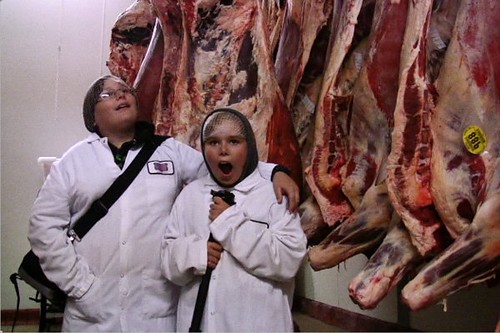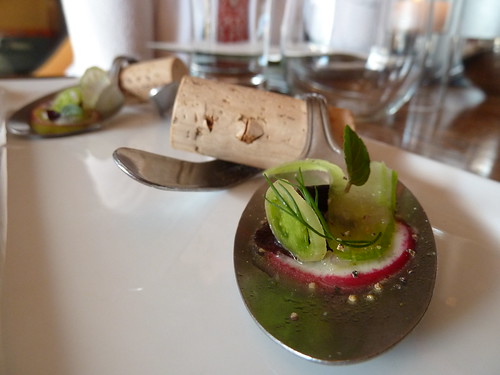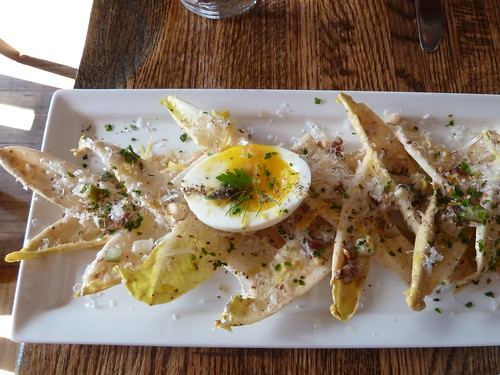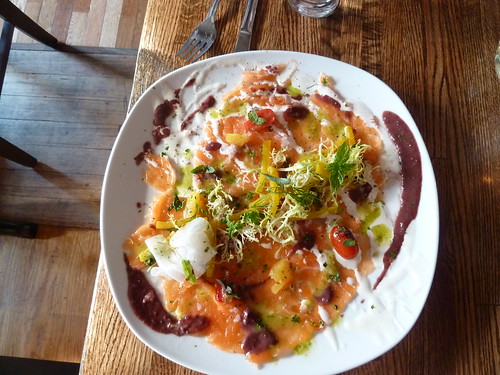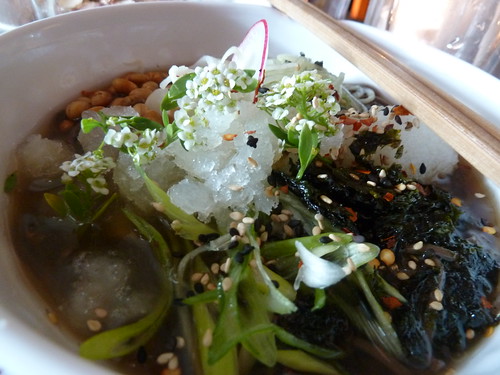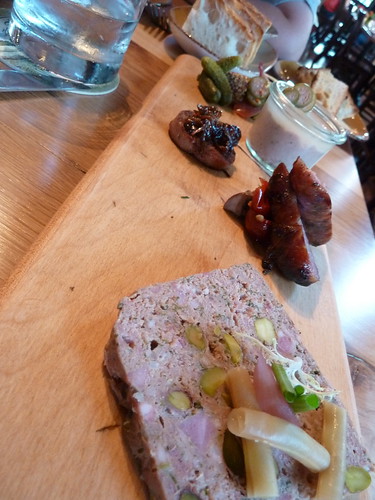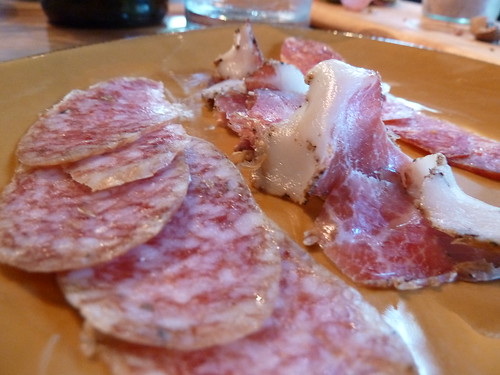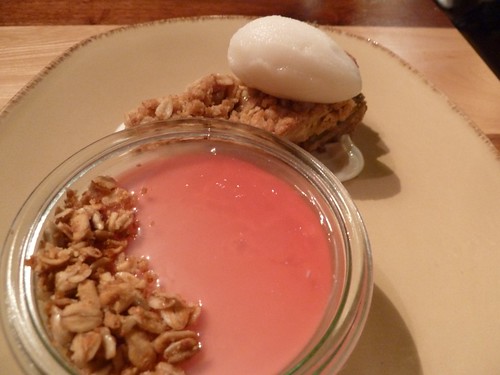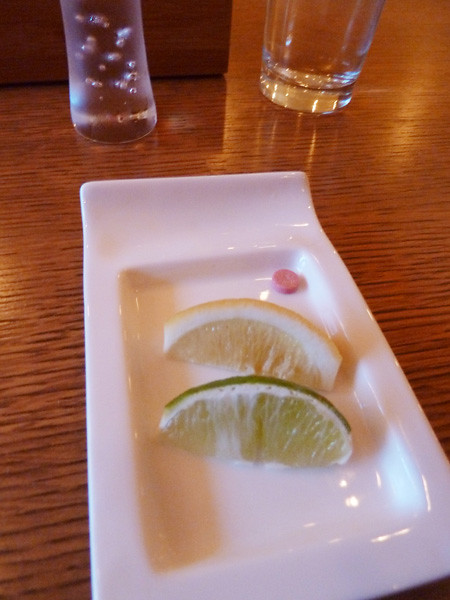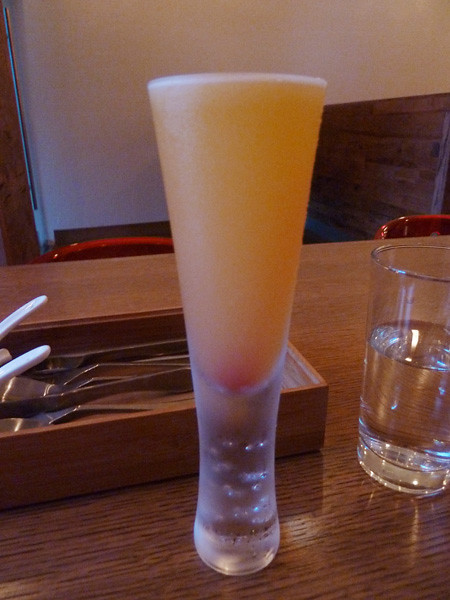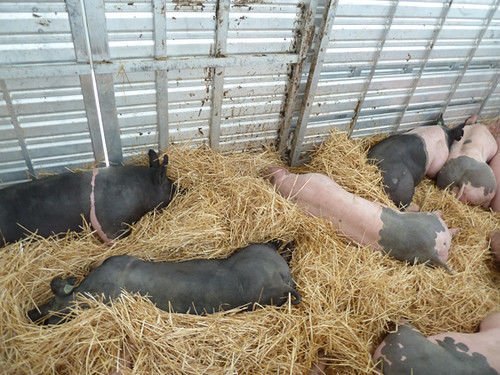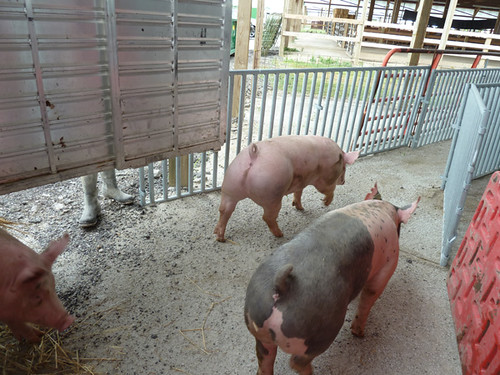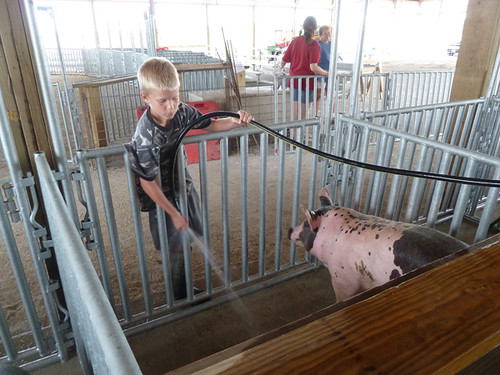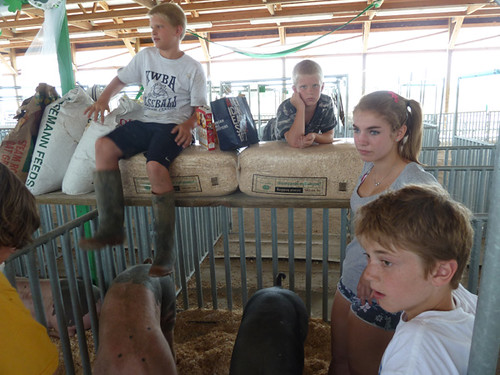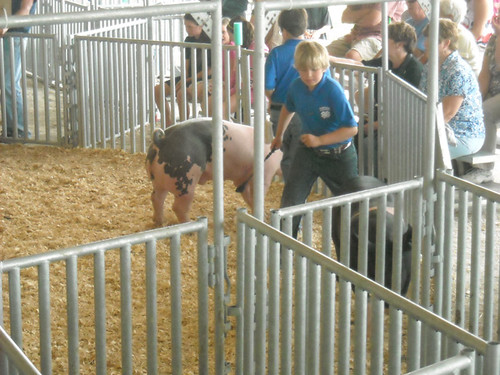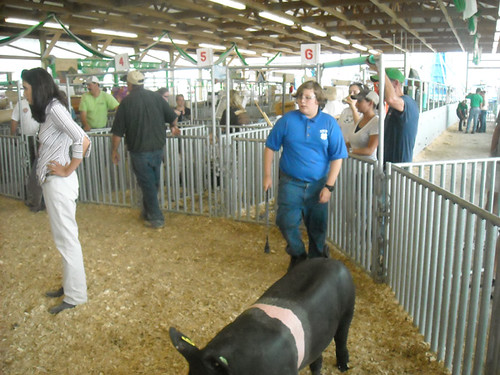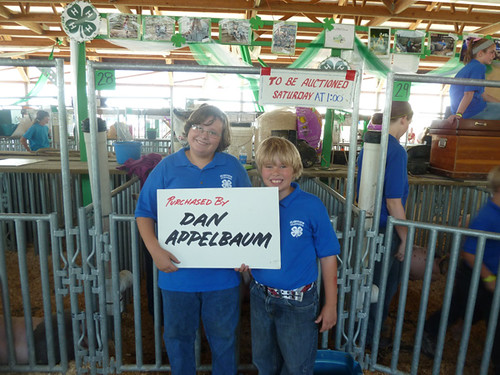
I’m not saying the only consolation of driving 14+ hours to my hometown of Wichita and spending the entire week in 100+ degree weather is the food along the way. No, wait, I pretty much am saying that, at least since we exhausted the list (two items long) of tourist attractions I wanted to see last year. We managed to find another excellent one this year, or rather my sister-in-law did. But otherwise, family aside, the only thing to do was eat.
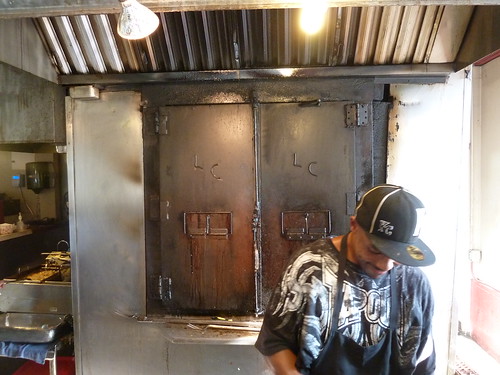
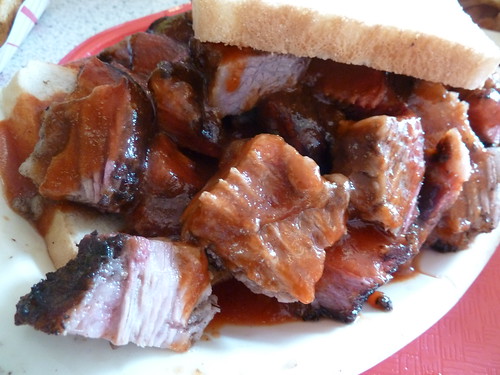
I wanted to visit L.C.’s BBQ in Kansas City again for dinner; there’s always a danger with barbecue of being wowed by one, irreproducible experience. As it turned out, it wasn’t as good as last year, but in ways that paradoxically confirmed its superiority. Huh? What am I smoking? Well, the thing with barbecue is, it’s always variable. And this year compared to last, the variation was that the burnt ends, luscious little meat and smoke nuggets, weren’t as done as last year, and hence were a little fatty and chewy. But you could tell what they’d be in another hour or two— and meanwhile the ribs, which hadn’t stood out last year, were terrific. A second visit, even though not perfect, convinced me that L.C.’s remains in the front rank of pit barbecue joints, and in contrast to so many new Kansas City places popping up, is still gritty and real enough to treat my kids to a real-life episode of Cops as we pulled up.
My original goal upon reaching Wichita the next morning was to eat at an old favorite, Takhoma Burger, which had apparently reopened in a former Tiki Dancing bar just south of downtown on the somewhat sketchy strip of South Broadway mainly familiar to me, as I was growing up, from news reports of massage parlors being raided. (My friend Scott once called up the Tiki Dancing place to ask what Tiki Dancing was. He was told he’d have to come in to find out which, as he was 16 at the time, was not possible.) Alas, it was no more, so a quick call to my mom produced the alternate suggestion of a Walt’s on Tyler.

Ersatz diners in Wichita are so common that the real old school diners feel compelled to look like the ersatz diners. The difference is, no real diner would have billboards for its “Wok’n’Roll Bowls,” as the annoying Spangles chain does.
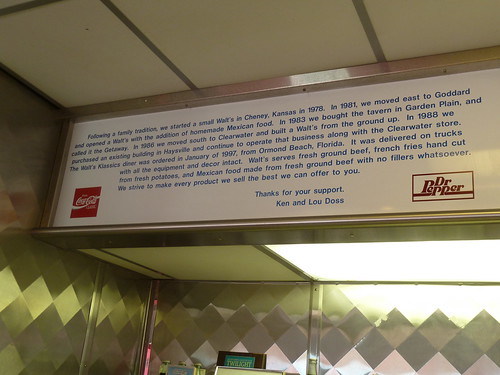
I say “a Walt’s” because various places called Walt’s, of varying quality, have popped up around town over the years, started by different descendants of the original Walt. This one, though, is in a gleaming diner building imported from the east coast (I couldn’t tell if it had been bought new or well-used already) and the loosely-packed fresh-meat burger and fresh-cut fries were textbook perfect, every beefy thing you want a diner burger to be and rarely find in Chicago. I tweeted that it was one of the 10 best burgers in America, perhaps an enthusiastic exaggeration, but certainly not an absurd claim.
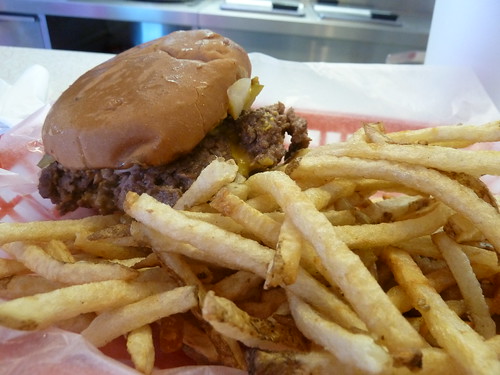
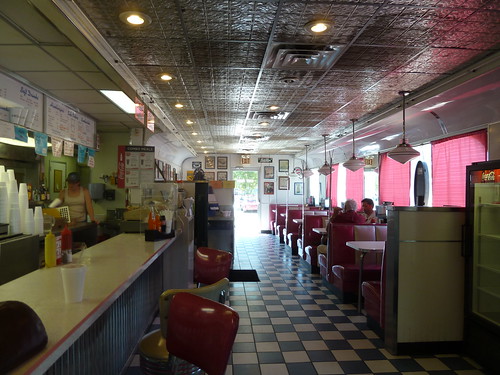
Presumably the oldest surviving hamburger chain in Wichita is the Kings-X chain; Jimmie King was an original White Castle franchisee in Wichita (where the chain started) and went out on his own some years later. Kings-X was always a slightly downmarket but good enough family restaurant chain with classic old school burgers with grilled onions. When a yuppie area on the east side took off, the younger generation built a new restaurant called Jimmie’s Diner which successfully managed to draw yuppies for, again, a real diner’s imitation of an imitation diner.
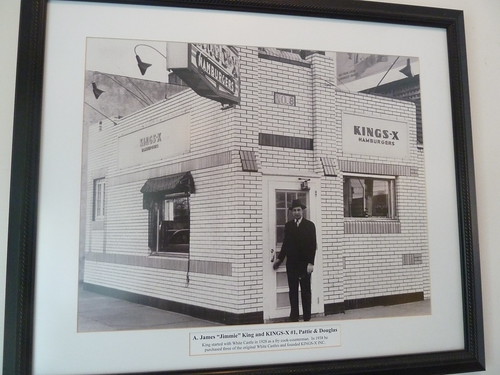
We stopped there for lunch after a matinee of Captain America. The burger was not up to Walt’s, though still better than 98% of Chicago family restaurant burgers, I’m sure. The odd thing about it, though, was that it tasted exactly like a Five Guys burger. Did Kings-X burger’s always taste like that, even before Five Guys existed, or are they imitating that chain (which has reached Wichita) instead of their own heritage? I don’t know, but it was strange.

Another old chain, food’s decent enough but I always loved the logo. I grabbed an excellent cherry limeade here.
My last burger stop was on the near West side, in what you might call the hippie-biker-artist part of town. T.J.’s had come highly recommended over the years, and it did not disappoint. The patty is bigger than a canonical 30s style thin patty, but I was impressed that they nevertheless managed to get a Schoop’s-like outer crust on it without murdering the inside. I ordered a chili burger just to have something different, and the chili was old-school beanless with some nice heat, again bridging tradition with modernity.
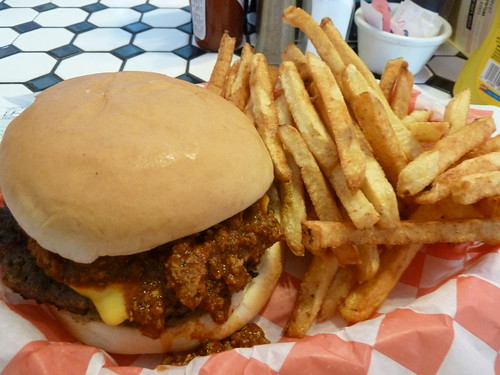
To be honest, though, I have to admit by this time I was pretty worn out by burgers, fries, black and white checkerboard tile, jukeboxes, pictures of James Dean and Marilyn Monroe sitting at the counter, etc. One thing I noticed driving around town this year was that there are lots of new barbecue places. Two Brothers is the one we tried (my in-laws ordered takeout one night) and it’s perfectly solid Kansas City-style BBQ, but I wonder about all these other places. Maybe next time that will be my quest– to see if Wichita can finally compete with Kansas City as a BBQ destination, too.
* * *
More interesting to me this time, though, was that Asian food has exploded in Wichita. Much of it, admittedly, is pure fakery, like a bunch of new Mongolian barbecue places. But a Chowhound thread pointed me to a place that was supposed to be a Thai-Lao Cafe— like the Malaysian restaurant I ate in last year, something we can’t get in Chicago. And like that Malaysian restaurant, located in a former pancake house where my sisters used to waitress, the Lao restaurant was located in a pretty ironically nostalgic location, a one-time Davy Crockett-themed arcade on the south side:

We went inside and the atmosphere was something between a VFW hall and the place the GI’s would have gone for R&R in Full Metal Jacket, a sort of tropical disco feel with the Lao extended family hanging out watching Dancing With the Stars or something at a long table littered with beer cans:

The menu looked straight Thai to me and I had to work my way through the entire family in search of Lao dishes. The son called Mom over, Mom barely spoke English and seemed unsympathetic to my desires, Dad finally came over and was much more amiable about helping me pick out things that he claimed were at least a little more like Lao dishes, though he said they didn’t have many of the Lao ingredients on hand. When we had made a decent list, he reached under the counter, and came back up with a dusty 1980s cash register, which he plugged into the plug next to the coffee maker to ring me up. Not a lot of food traffic, I thought, which made his greeting query (“You call for pickup?” even more curious. But no more curious than a (painfully) white family, 9-year-old son included, sitting there at the Phnom Penh disco waiting for takeout must have seemed to the occasional Thai or Lao person wandering in; pretty sure they’re not getting a lot of traffic from the east side of Wichita. It was pretty good authentic Thai, in the ballpark of our best places here, but if there was anything Lao about it, I wouldn’t know.
* * *

But I said we hung out with eagles. My sister-in-law found this privately run bird sanctuary west of town; with 100 degree weather the guy didn’t want to exercise the birds during the day, but he said if we came out early in the morning, he’d give us the tour. So we saw and interacted with hawks, kites, falcons, and…

He says he has the only bald eagle tame enough that you can pose for pictures with it. I’m always awestruck when I see a bald eagle in the flesh; it’s like seeing a president in person.
* * *

My old LTHForum colleague Aaron Deacon suggested Brobeck’s as another possible Kansas City BBQ destination, and being located right off 435 on our way to Iowa and Chicago, we decided to give it a try, even if it was white suburban barbecue in a strip mall.
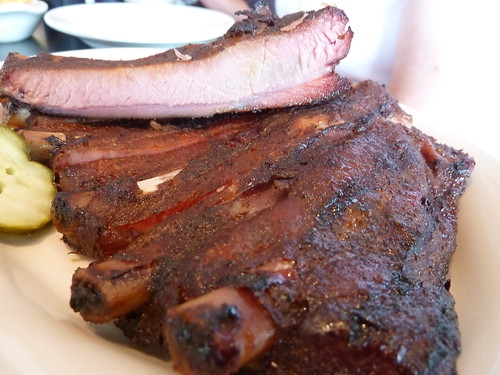
It’s really good white suburban strip mall barbecue, though— like Smoque, getting about the most you can out of a Southern Pride. Burnt ends were terrific, ribs and smoked sausage quite good, and the sample of ham salad offered at the start worth a lunch trip (well, not from Chicago maybe, but from the KC area, sure). One thing that amused me: besides their own sauces, they offered dispensers of other popular sauce brands like K.C. Masterpiece and Gates’. To me that’s Coke offering you a shot of Pepsi to put in your Coke, but I guess these sauces have such a following that it makes sense in Kansas City.

Noticeably missing, though: Arthur Bryant’s.
Finally, we stopped over in Iowa City. Being a college town, Iowa City’s culinary scene seems dominated by pizza, and the Yelp reviews for any of them are not spectacularly good, but the best of the bunch seemed to be an old place called Pagliai’s.

Last year we ate pizza in the Quad Cities area; this, though another hour further from Chicago, seemed much closer to a Chicago pizza, the same rolled-out crust you see around town, a thin tomatoey sauce like D’Agostino’s, and where the Quad Cities pizza’s idea of sausage was crumbly breakfast sausage-style, as it is through much of the midwest, this had nice lumps of pretty good Italian sausage. A very decent pizza— and at least it wasn’t another damn hamburger.
Tags:
bbq,
burgers,
iowa city,
kansas city,
pizza,
wichita


 Posted in
Posted in 

